8. Maternal country of birth
NSW Public Health Bulletin 21(1) 84-92 https://doi.org/10.1071/NB10S08
Published: 24 June 2010
In this section, maternal countries of birth are combined into English speaking and other regional groups. The country groups and individual countries are listed in Appendix 3. Recent trends in confinements for individual maternal countries of birth are shown in Table 4 (p. 18).
Trends in confinements
Between 2003 and 2007, the percentage of mothers who were born in non-English speaking countries rose slightly, from 20.6 to 22.5% (Table 88). The increase was mainly among mothers born in North-East Asian and Southern Asian countries. There was a decline in the percentage of mothers born in Southern European countries.
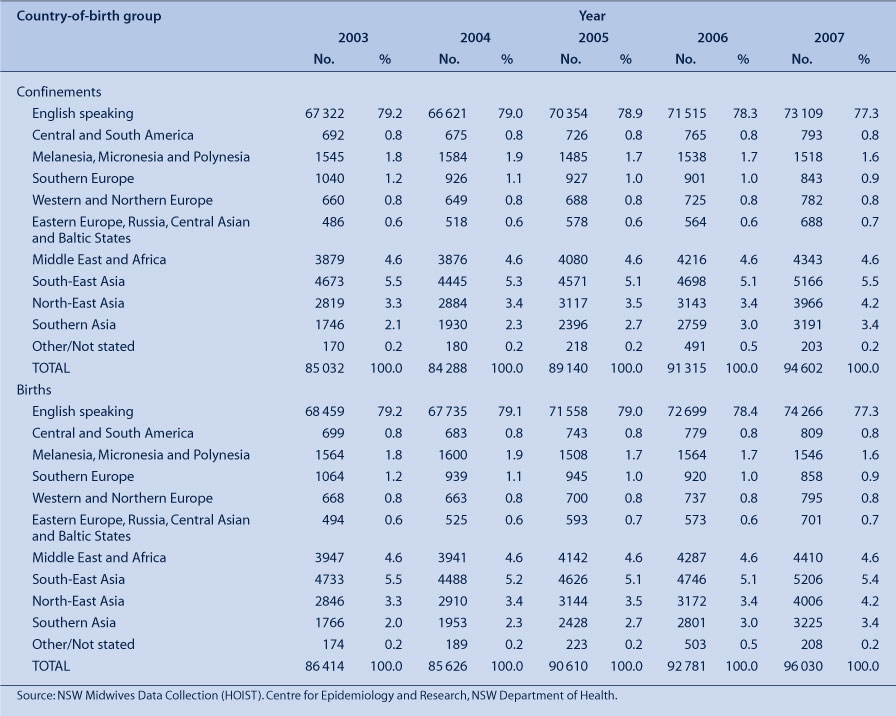
|
Maternal age
In 2007, births to teenage mothers were more common among mothers born in English-speaking countries than in non-English speaking countries (Table 89, Figure 4), whereas the largest proportions of mothers aged 35 years and over were among mothers born in Western and Northern Europe (35.2%) and Central and South America (31.8%).
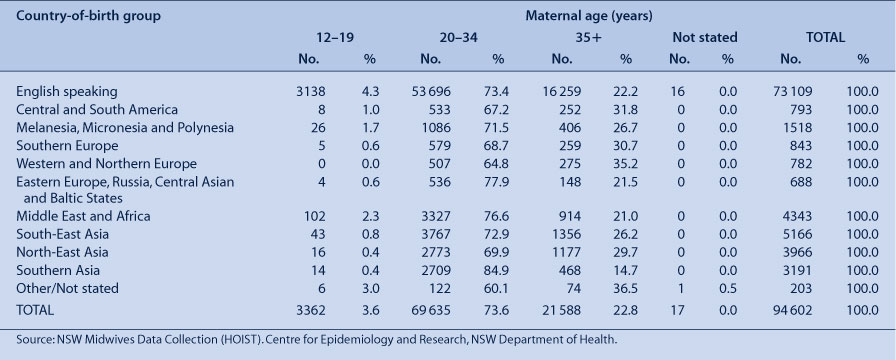
|

|
Health area of residence
In 2007, the proportion of mothers born in non-English speaking countries was highest in the Sydney South West Area (38.8%), followed by the Sydney West Area (32.7%). Six percent of mothers were born in South-East Asian countries, 49.1% of whom were resident in the Sydney South West Area. Almost 5% of mothers were born in Middle Eastern or African countries and 80.2% of these mothers were resident in the Sydney South West or Sydney West Areas. A further 4.2% of mothers were born in North-East Asian countries and 3.4% in Southern Asian countries, with the majority living in metropolitan areas (Table 90).

|
Duration of pregnancy at first antenatal visit
In 2007, 90.7% of all mothers commenced antenatal care before 20 weeks gestation. There was some variation among country-of-birth groups, with 91.7% of mothers born in English speaking countries commencing antenatal care before 20 weeks gestation, compared with 78.0% of mothers born in Melanesia, Micronesia, and Polynesia, and 84.9% of mothers born in the Middle East and Africa (Table 91).
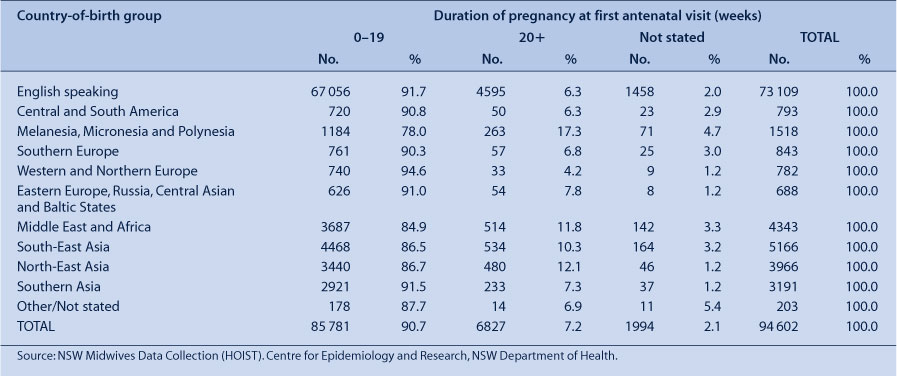
|
Smoking in pregnancy
In 2007, smoking at any time during pregnancy was more common among mothers born in English speaking countries than among mothers born in non-English speaking countries (Table 92). About one in six mothers born in English speaking countries smoked at some time during pregnancy, compared with <1 in 10 mothers born in other country-of-birth groups.
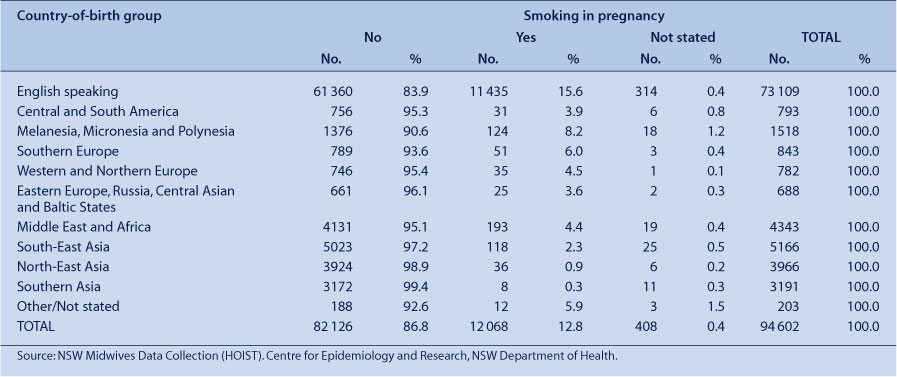
|
Smoking in the second half of pregnancy poses the greatest risk to the health of both mother and baby. Six percent of mothers who smoked during pregnancy quit before the second half of pregnancy. Of mothers who did smoke in the second half of pregnancy, mothers born in English speaking countries were more likely to smoke more than 10 cigarettes per day compared with mothers born in other country-of-birth groups (Table 93).

|
Medical conditions and obstetric complications
In 2007, 1.6% of mothers born in Melanesia, Micronesia and Polynesia were reported to have diabetes mellitus – two and a half times the rate for all mothers in NSW, though the number of mothers is small (Table 94). The rates of gestational diabetes in mothers born in North-East Asia, Southern Asia and Melanesia, Micronesia and Polynesia were more than twice the rate for all mothers in NSW.
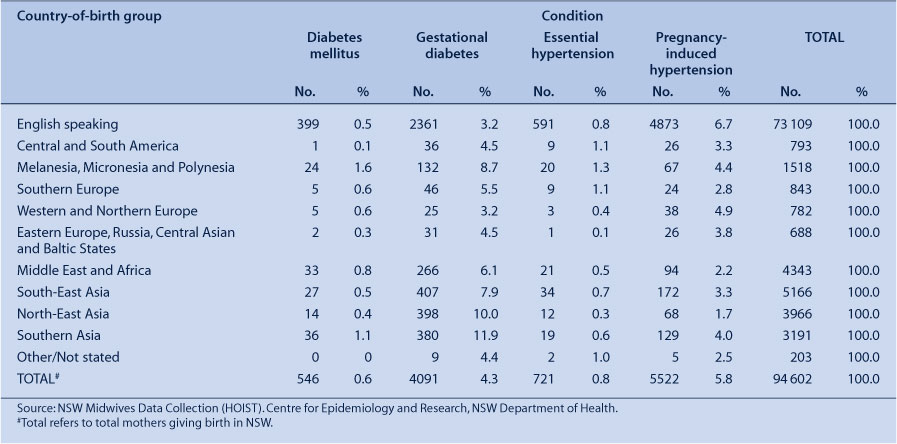
|
Overall, 0.8% of mothers were reported to have essential hypertension, and 5.8% were reported to have pregnancy-induced hypertension.
Labour and birth
Mothers born in non-English speaking countries were more likely to have a spontaneous onset of labour than mothers born in English speaking countries (Table 95). Rates of induction of labour varied from 18.3% among mothers born in South-East Asia to 28.6% among mothers born in Southern Asia.

|
Mothers born in the Middle East and Africa and Melanesia, Micronesia and Polynesia were more likely to have a normal vaginal birth than mothers in other country-of-birth groups (Table 96). The highest caesarean section rates were among mothers born in Central and South America (37.2%) and Southern Asia (32.4%).
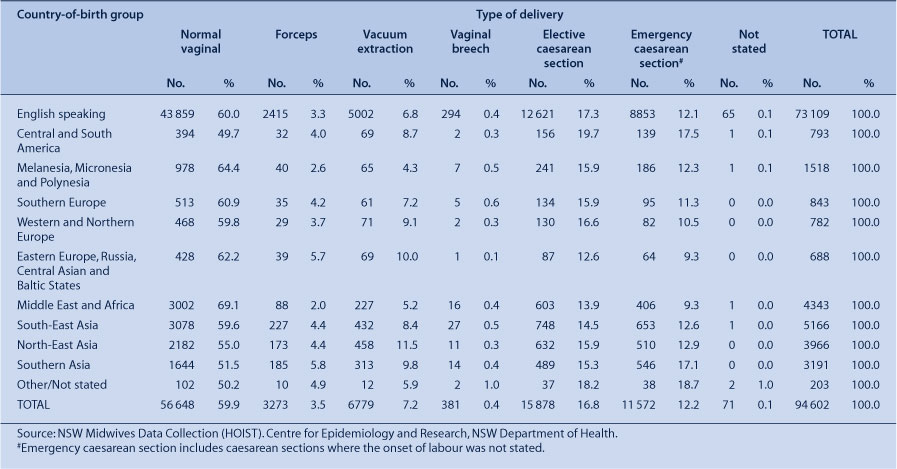
|
Birth weight
The rate of low birth weight (<2500 g) in 2007 was 6.1% in NSW. The highest rates of low birth weight were in babies of mothers born in Southern Asia (9.1%) and Melanesia, Micronesia and Polynesia (7.4%) (Table 97). Babies of mothers born in Eastern Europe, Russia, Central Asian and Baltic States were least likely to be of low birth weight.

|
Gestational age
The rate of prematurity (<37 weeks gestation) in 2007 was 7.4% in NSW. The highest rate of prematurity was among babies of mothers born in Melanesia, Micronesia and Polynesia (8.3%). Babies of mothers born in North-East Asia were least likely to be premature (Table 98).
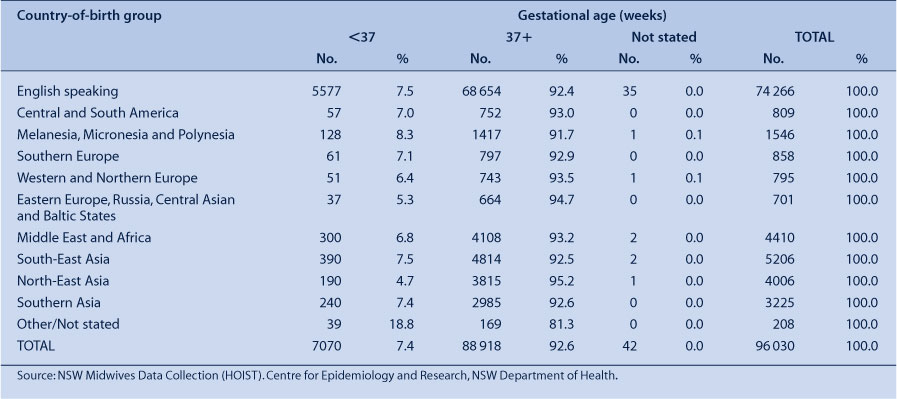
|
Apgar score
In 2007, 2.1% of all babies (including stillborn babies) had an Apgar score of <7 at 5 min and 1.1% had a score of <4 (Table 99). The rate of Apgar scores of <7 was highest among babies of mothers born in Western and Northern Europe (2.5%) and Melanesia, Micronesia and Polynesia (2.4%).
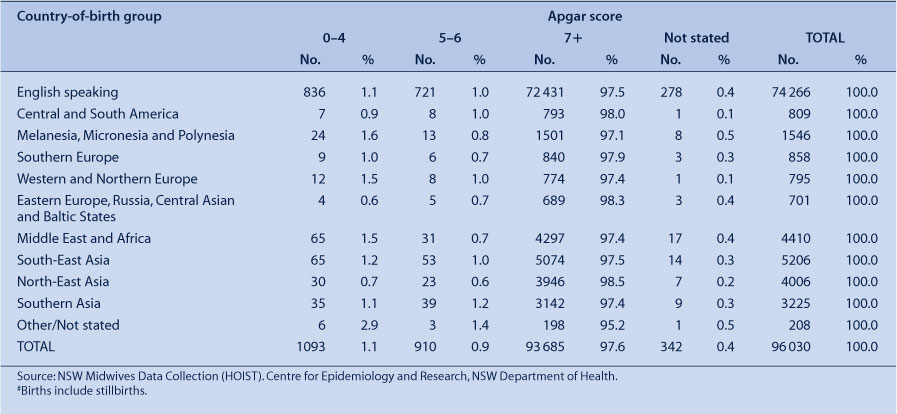
|
Infant feeding
The highest rates of full breastfeeding in 2007 were among babies of mothers born in Eastern Europe, Russia, Central Asian and Baltic States (87.2%), followed by babies of mothers born in Western and Northern Europe (85.2%). The lowest rates of full breastfeeding were among babies of mothers born in North-East Asia (71.3%) and Melanesia, Micronesia and Polynesia (71.5%) (Table 100).
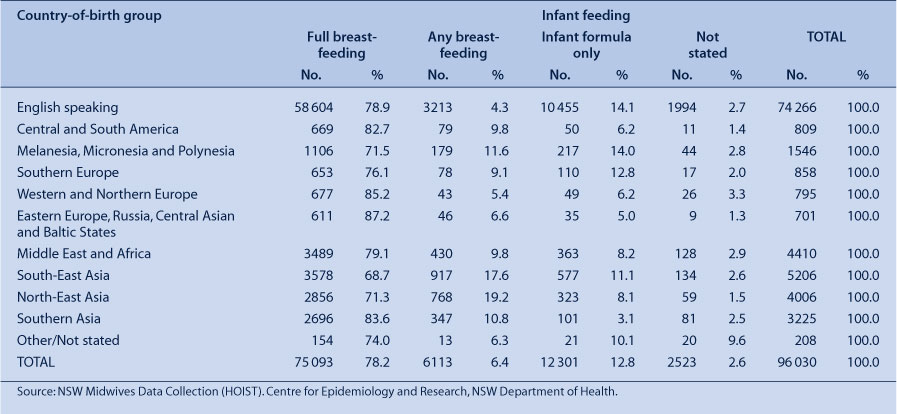
|
Perinatal outcomes
In 2007, 99% of babies born in NSW and reported to the MDC were born alive and survived until discharge from the hospital of birth (Table 101). The perinatal mortality rate was highest among babies of mothers born in Middle Eastern and African countries (11.3 per 1000) and lowest among babies of mothers born in North East Asia (5.7 per 1000). However, because the majority of births were to mothers born in English speaking countries, the majority of perinatal deaths occurred among these babies (n = 666, 76.7%). There were further 55 deaths among babies of mothers born in South-East Asia and 50 deaths among babies of mothers born in Middle East and African countries – comprising 6.3 and 5.8%, respectively, of all perinatal deaths reported to the MDC.
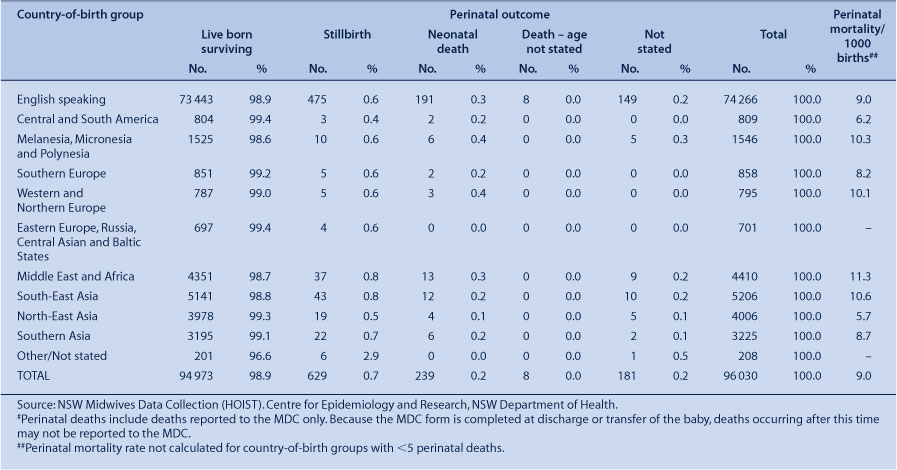
|


